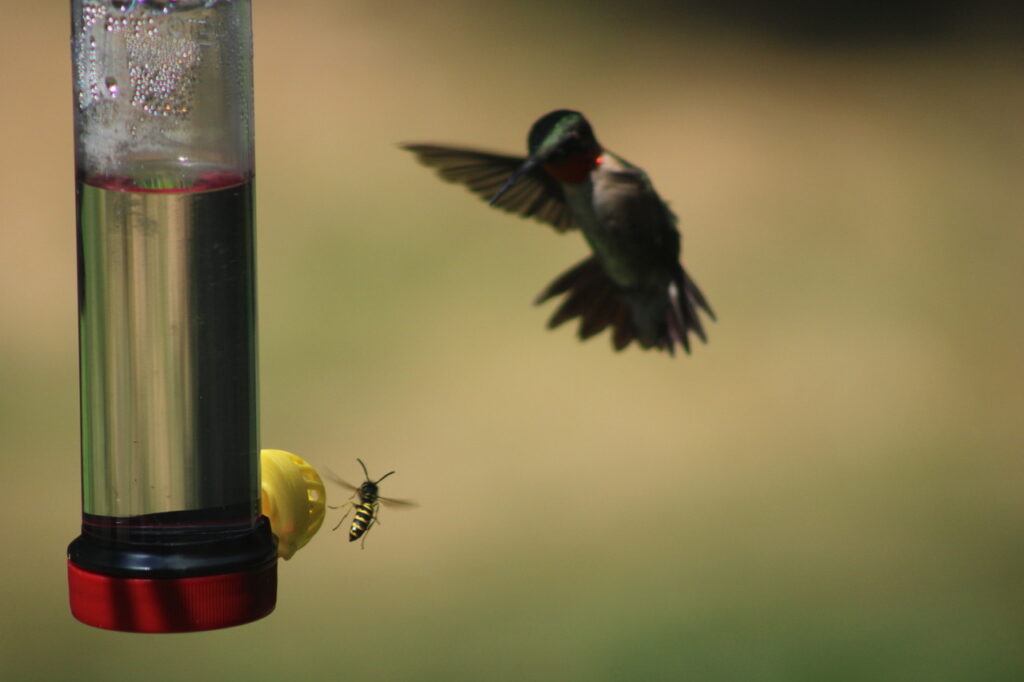
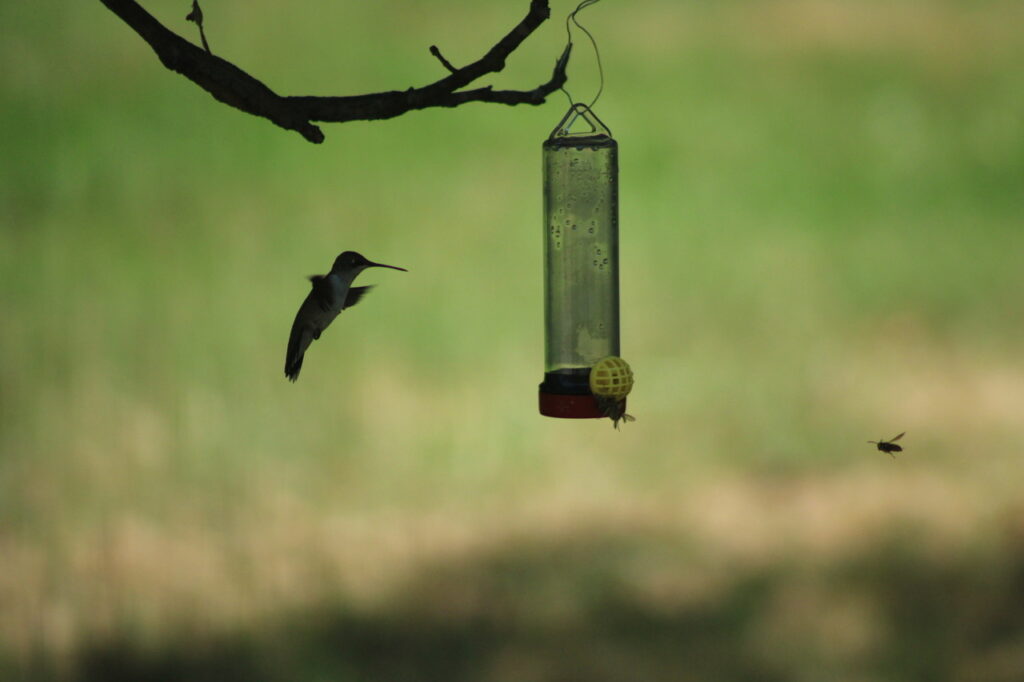
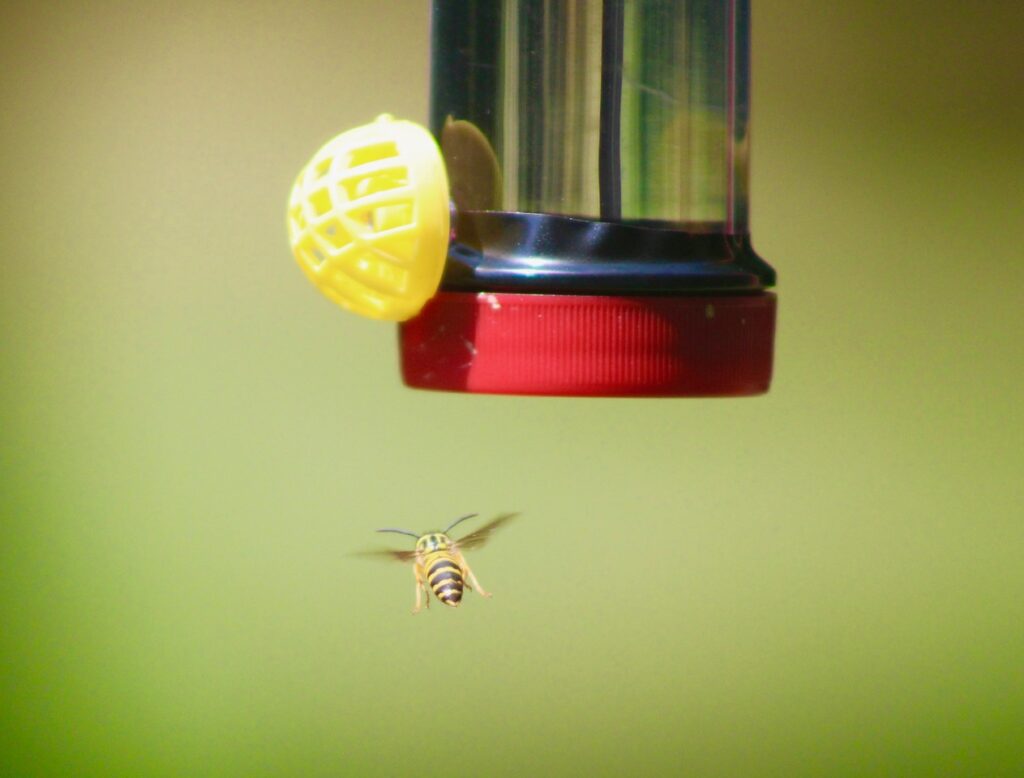
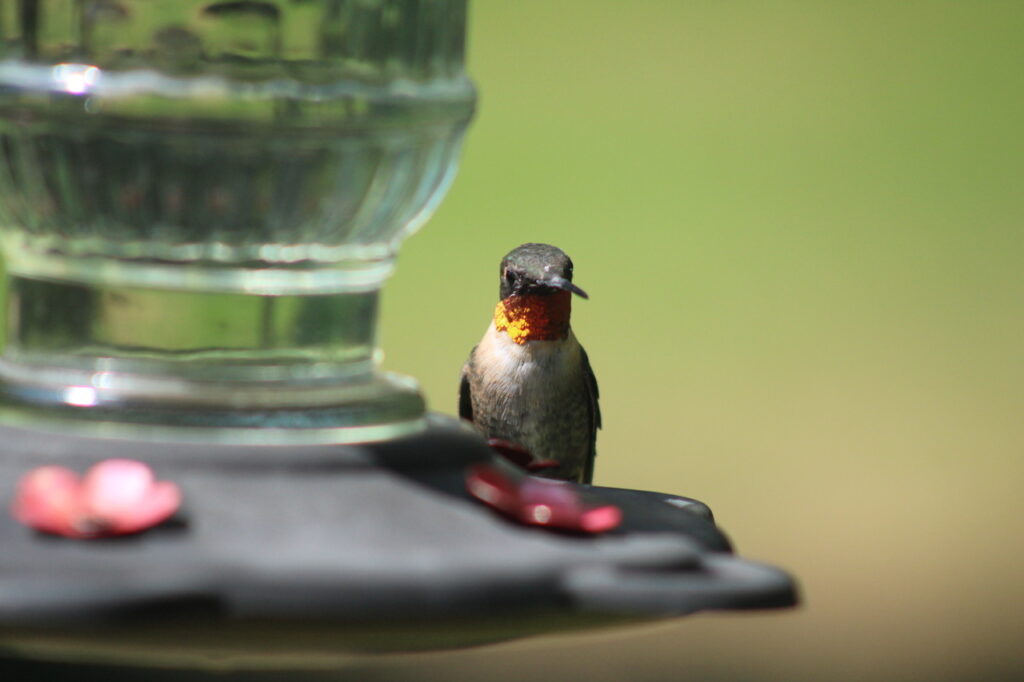
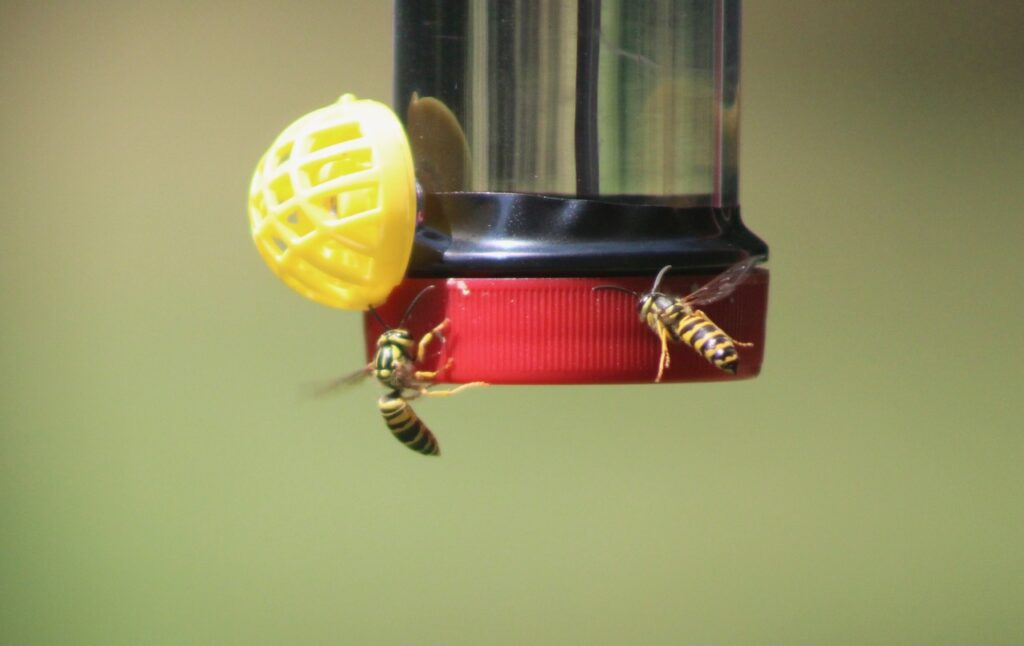


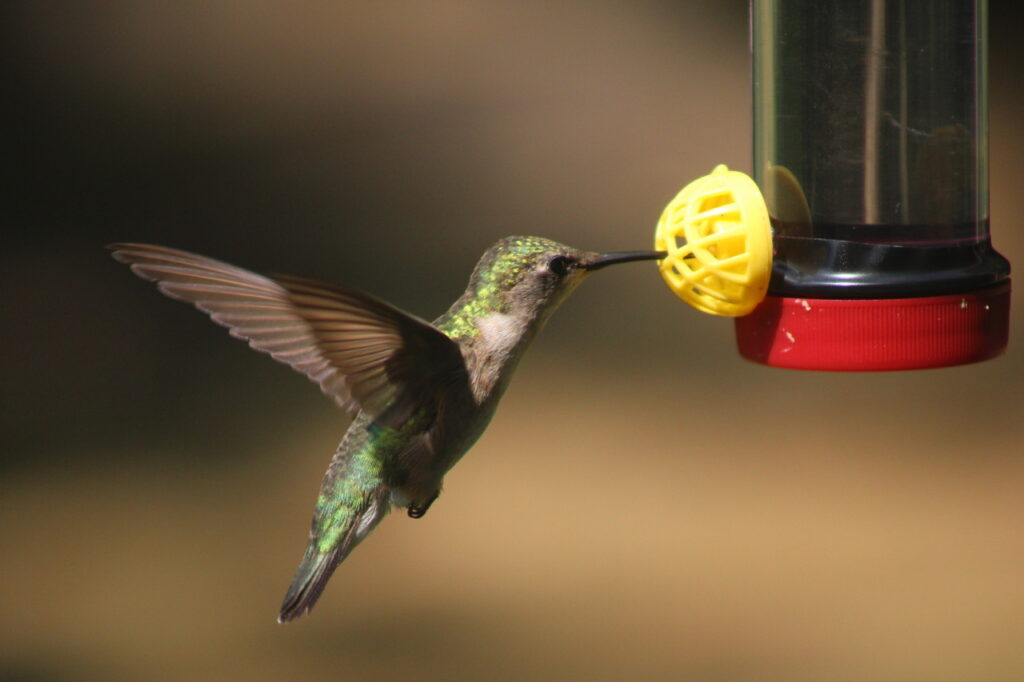
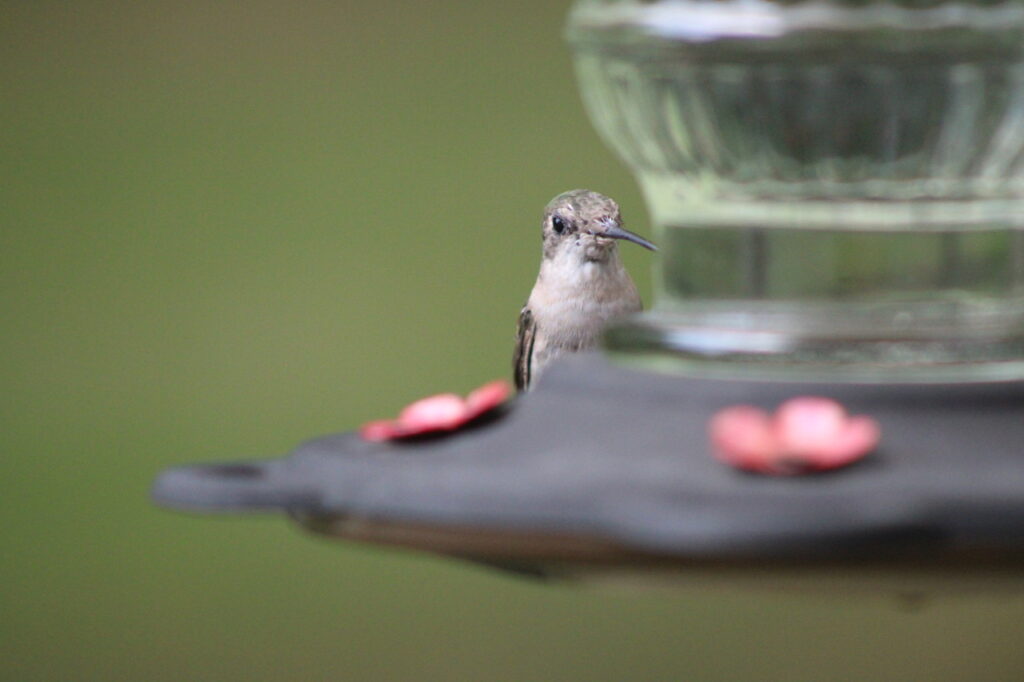
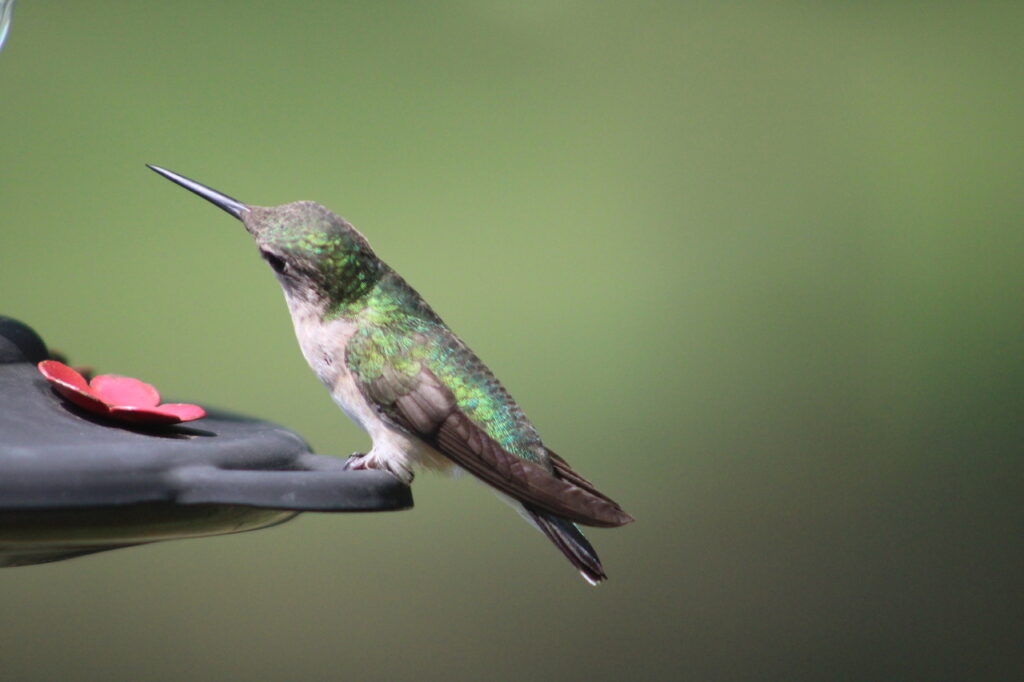
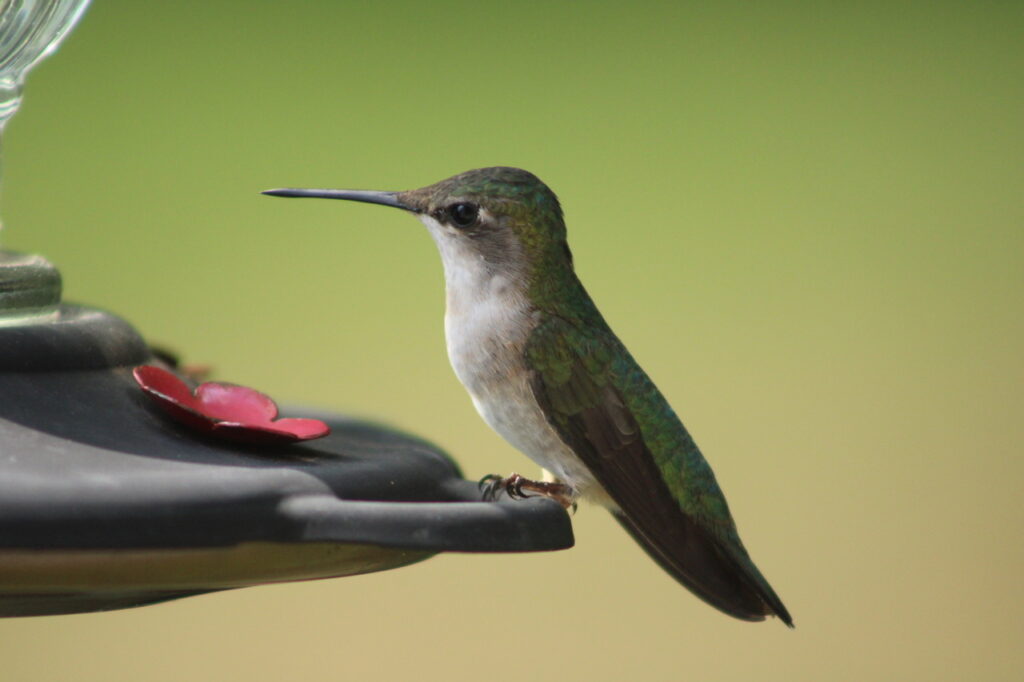
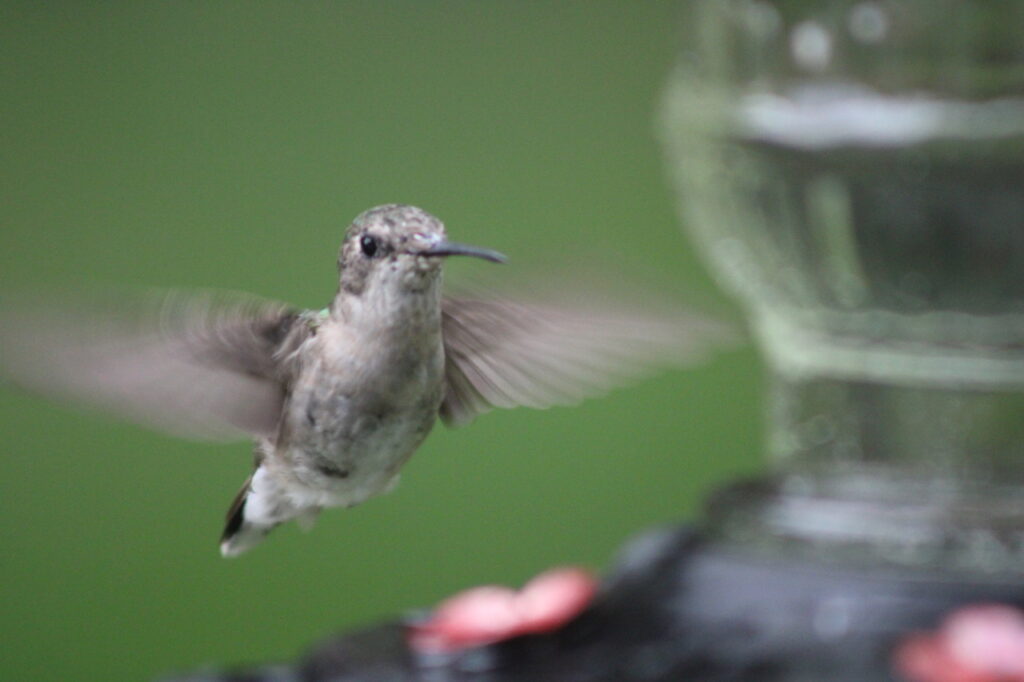
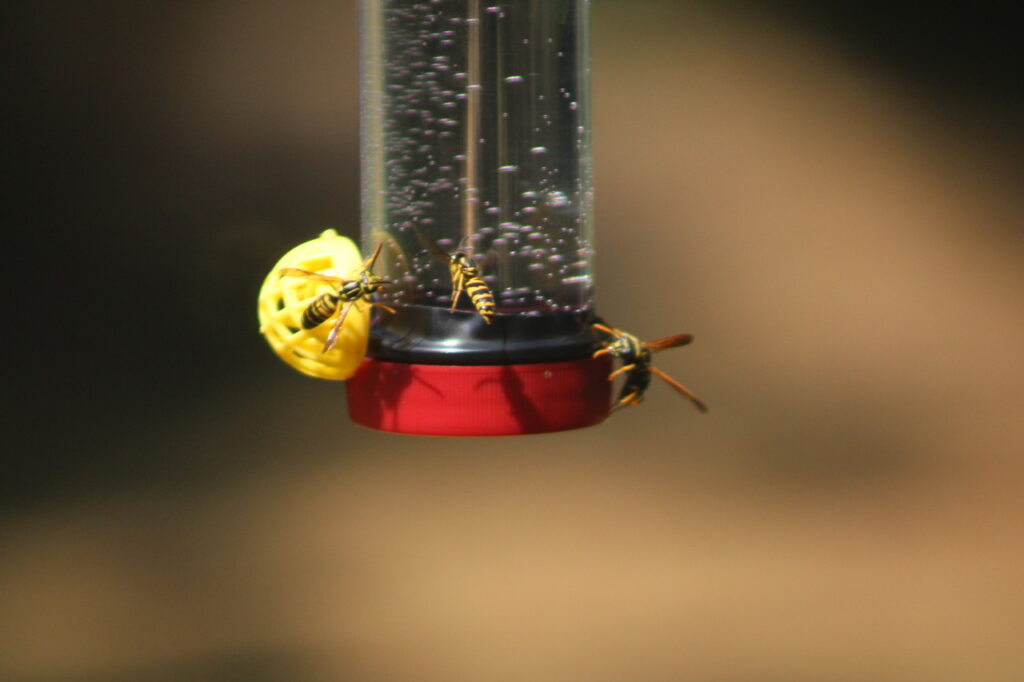
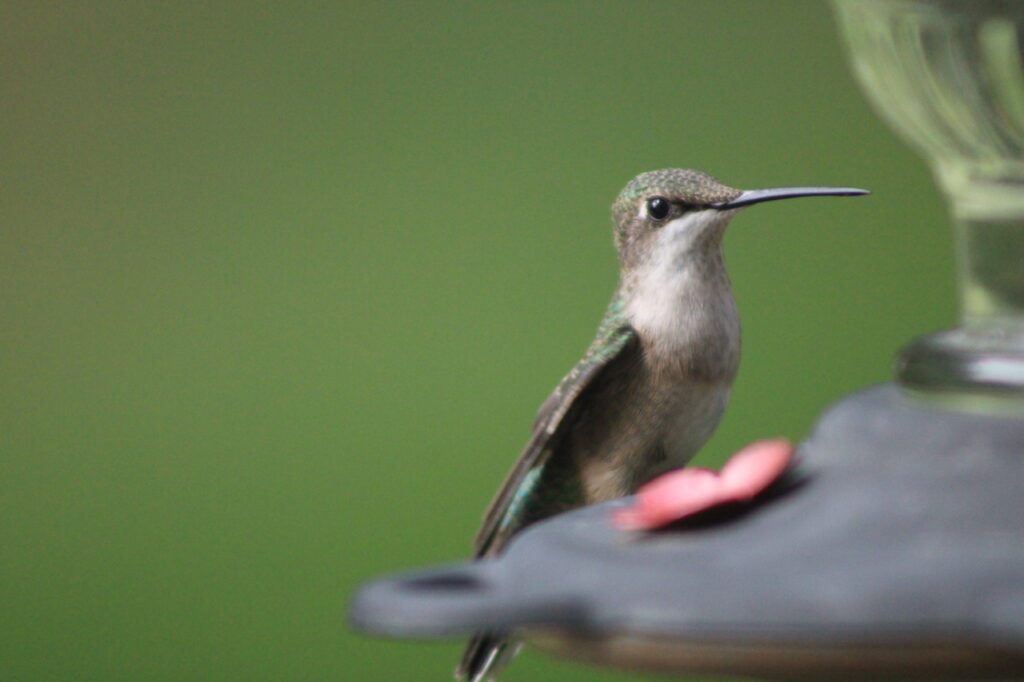
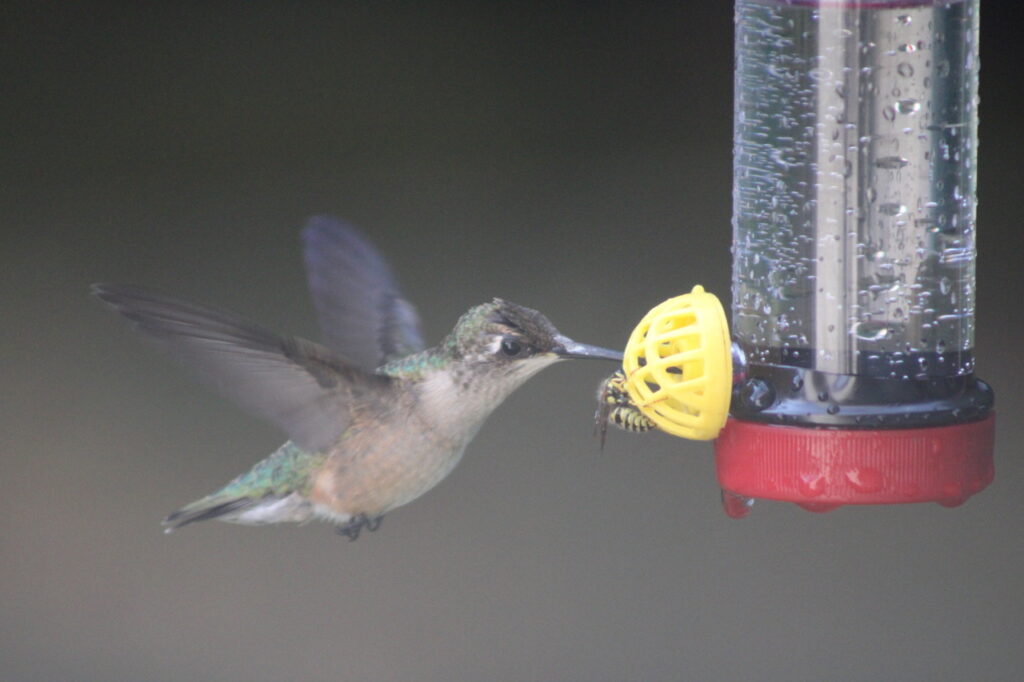
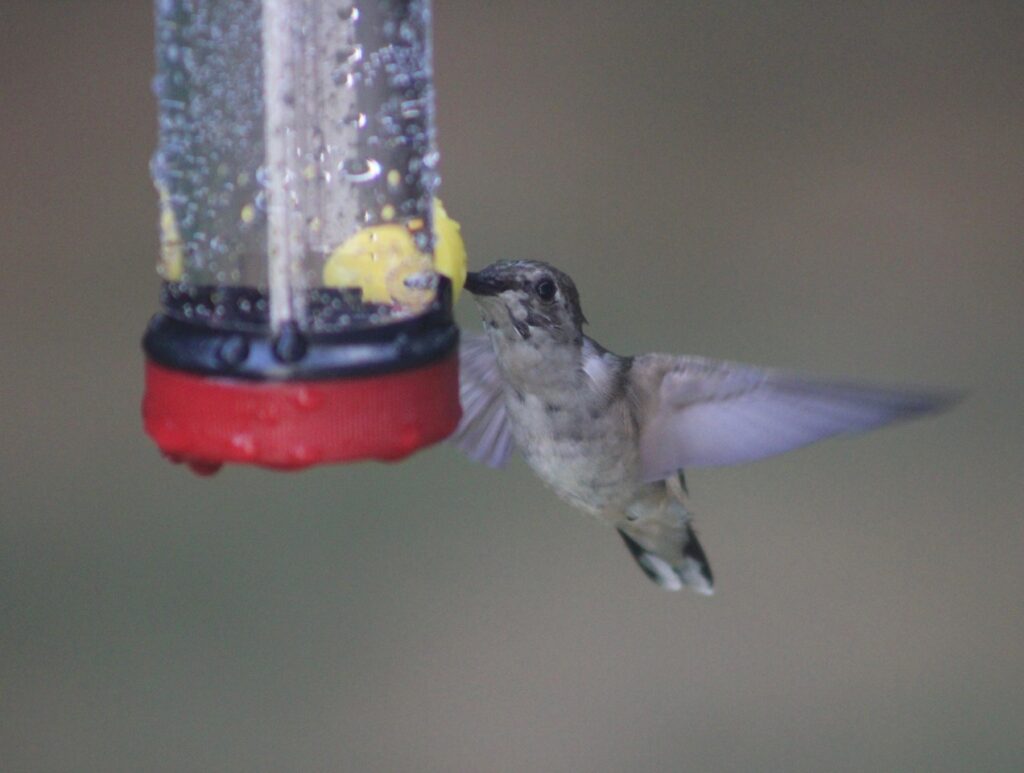
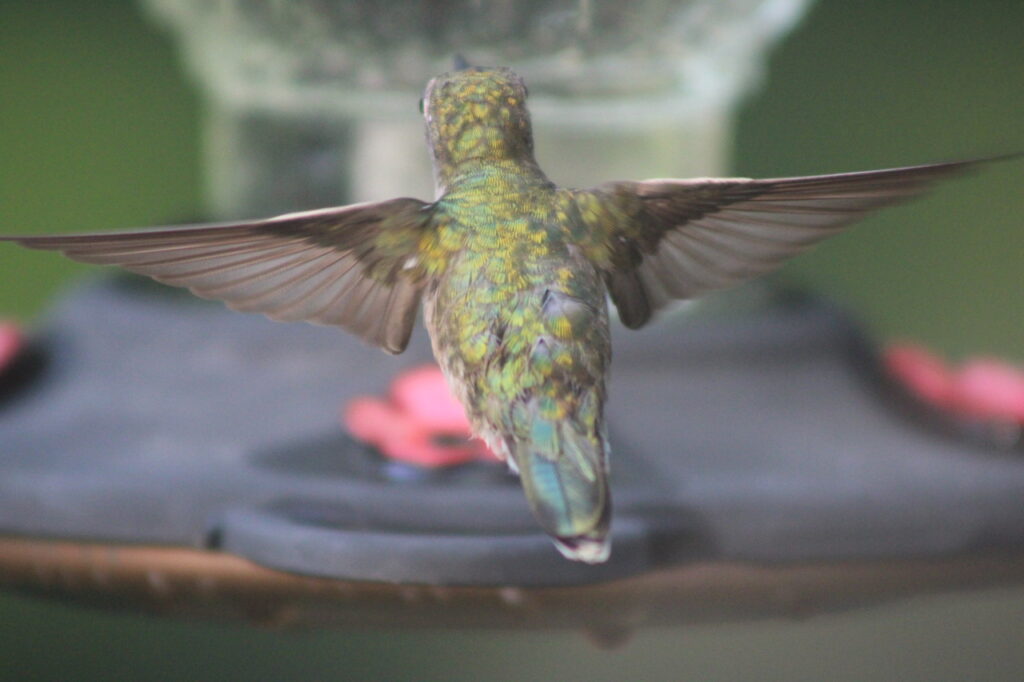
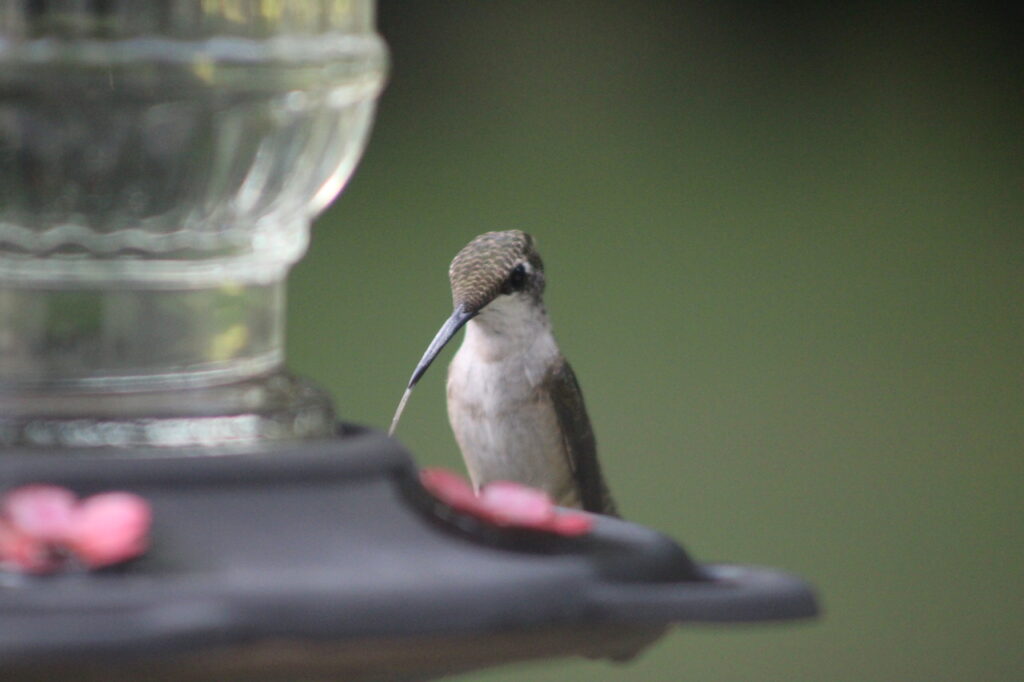
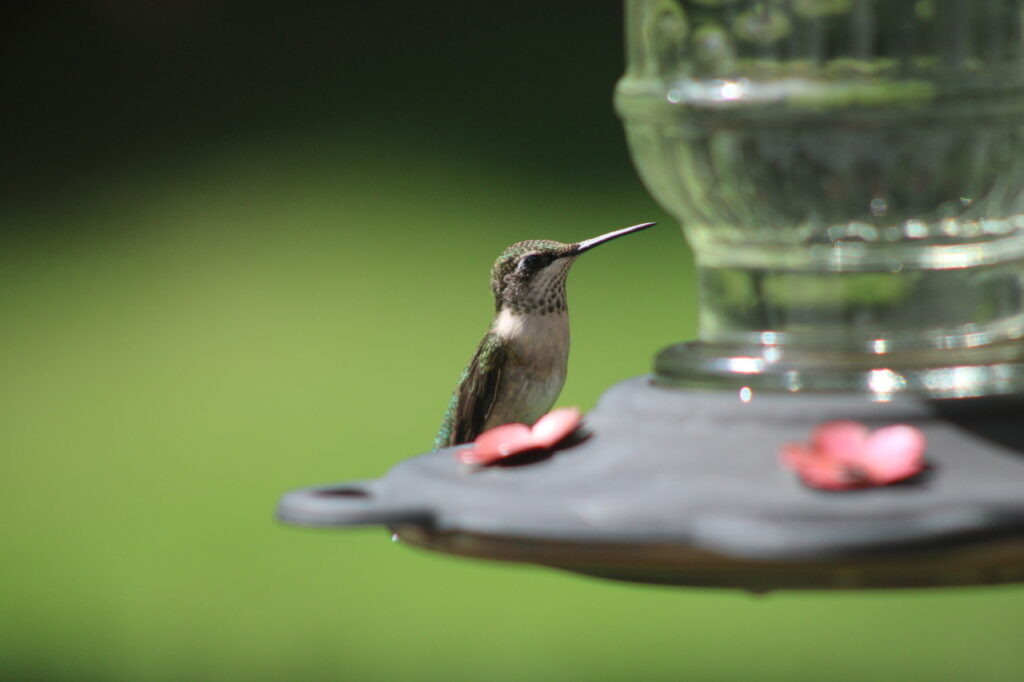
Hello there, friends! I am happy to report that I am healing nicely after last week’s wipe out. My mouth is almost back to normal – lets put it this way, if you saw me without my mask you wouldn’t cringe (I hope). I can now walk on my knee without any pain or need of support. I am taking it very slowly, though. No big walks around the neighborhood for a while yet.
This week I spent a lot of time watching our little hummingbird friends. Unfortunately, we have also had a constant stream of bees and wasps at the feeders. I remember that when I was a teacher this was my least favorite time of year to have outdoor recess duty. The bees do get a bit aggressive at this time of year, which I’ve read is due to a perfect storm of the population being at its peak in late summer, natural food sources running low, and preparing the hive for the winter. The hummingbirds are wary of the bees/wasps – they seem to prefer not feeding at the same time, and tend to fly away if a bee approaches the feeder while they are feeding. However, sometimes a bird’s got to do what a bird’s got to do, and they will put up with the insects in order to get their sugar fix.
Soon the hummingbirds will be migrating south again. Having never experienced this before I don’t know exactly when this will happen, but I’ve read that in late August/early September they will eat even more often to put on some weight for the journey (fun fact – hummingbirds don’t just eat nectar; their diet also consists of small insects like mosquitoes and aphids). Some articles I’ve read have described a sort of feeding frenzy, with many more visits to the feeder, as the migration date nears. So far our hummingbirds don’t like to share the multi-port feeder – if one approaches the feeder, the other zooms off. I wonder if that will change when they start feeding more.
I couldn’t narrow my photos down any further – I am just so fascinated with the different markings of all the birds who visit the feeders. If my photos look like we have very few males – well, we have very few adult males. The juvenile males look like the females (no red throat) until their first winter. However, females have nearly all-white throats and the juvenile males have more gray markings on their throats, so I can sort of guess which ones are which.
This weekend will be low key. No bike rides (ha!) and no walks outside yet. I am re-reading an old favorite book, The Shell Seekers by Rosamunde Pilcher. It’s a very cozy read, perfect for the rainy weather we’re having just now. I’ll spend most of the weekend reading, writing some letters, and keeping an eye on our little hummingbird friends.
Have a wonderful weekend!
Love,
Michelle xoxo
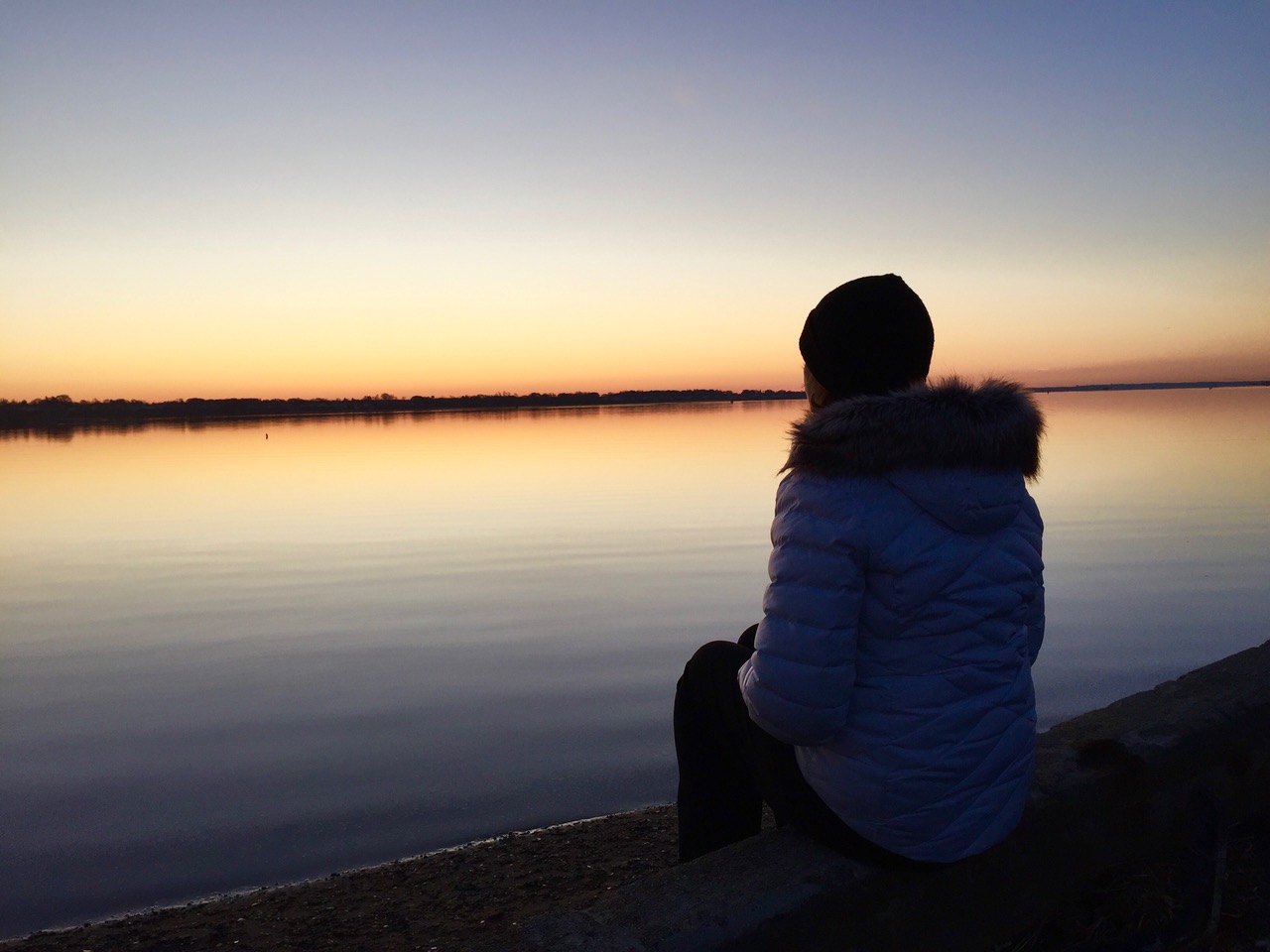
Thanks Michelle. Glad you’re feeling better.
Thanks, Martin! 🙂
Mom and I love watching the hummingbirds in CT. I said they fly like tinkerbell! So glad you are on the mend!
<3